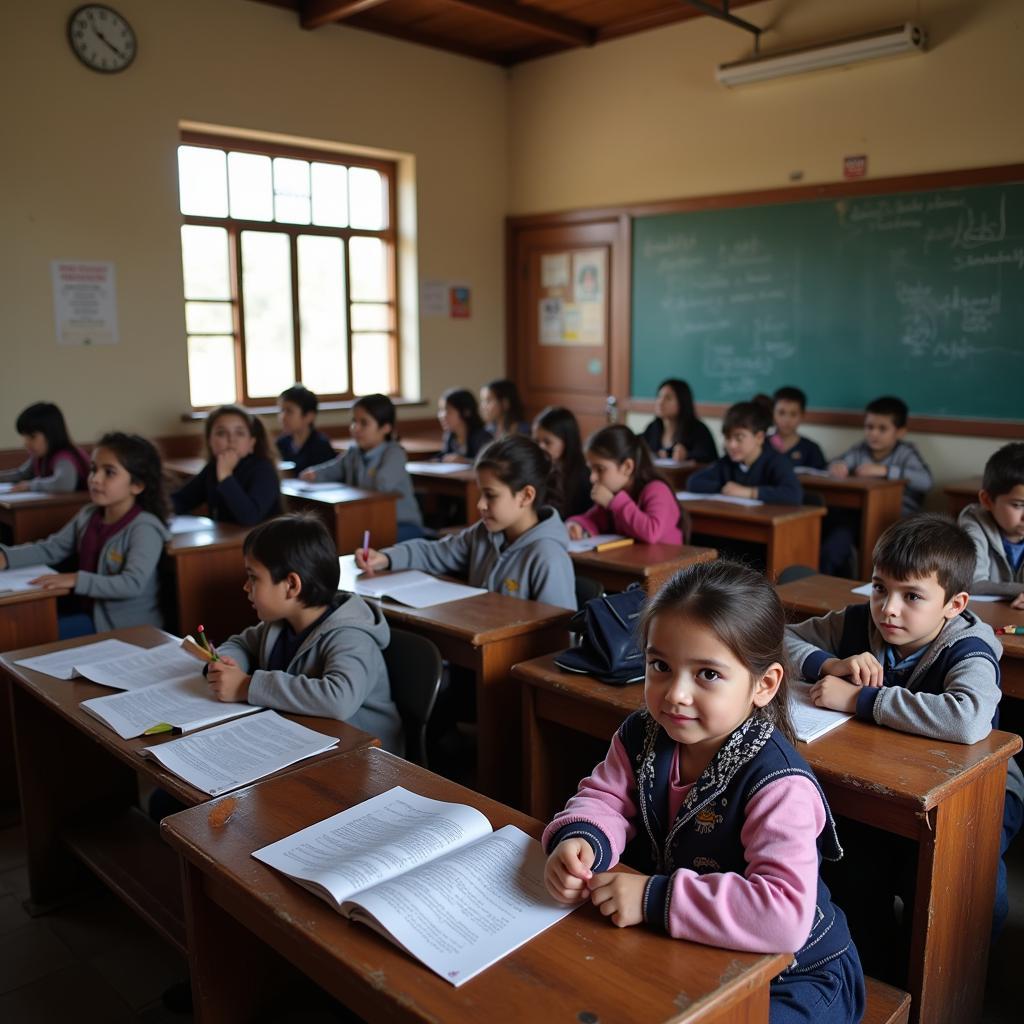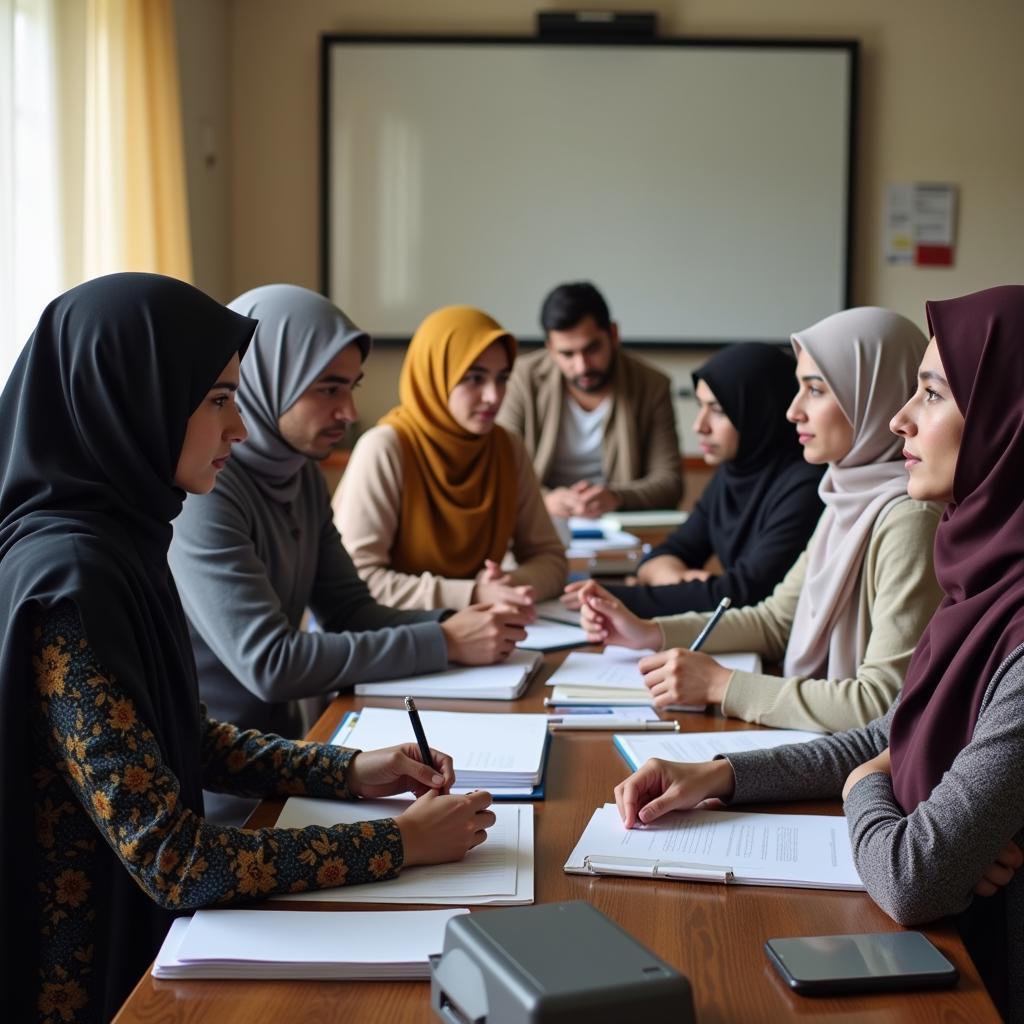The education system in Pakistan faces numerous challenges, ranging from a lack of funding and infrastructure to issues with quality and access. These challenges have significant implications for the country’s social, economic, and political development. This essay will delve into the complexities of the education system in Pakistan, exploring its historical context, current state, and potential solutions for a brighter future.
Historical Context: A Legacy of Inequality
To understand the current state of education in Pakistan, it’s crucial to examine its historical trajectory. Since its inception in 1947, the country has grappled with establishing a robust education system. The colonial legacy left behind a fragmented system that favored the elite, leaving a vast majority with limited access to quality education.
Current Challenges: A Multifaceted Crisis
 Pakistani Students Facing Educational Challenges
Pakistani Students Facing Educational Challenges
The education system in Pakistan today faces a myriad of challenges:
- Limited Access and Equity: Significant disparities exist in access to education based on gender, socioeconomic background, and geographic location. Girls, children from impoverished families, and those residing in rural areas face significant barriers to accessing quality education.
- Quality of Education: The quality of education remains a major concern, with issues such as outdated curriculum, inadequate teacher training, and a lack of emphasis on critical thinking and problem-solving skills.
- Funding and Infrastructure: Pakistan’s education budget remains woefully inadequate, resulting in a lack of investment in essential infrastructure, learning materials, and teacher development programs.
- Private vs. Public Divide: A stark divide exists between private and public schools. While private schools often provide better facilities and resources, they are inaccessible to a large segment of the population due to high costs.
Opportunities for Reform: A Vision for the Future
 Opportunities for Education Reform in Pakistan
Opportunities for Education Reform in Pakistan
Despite these challenges, there is hope for positive change. Addressing the issues plaguing Pakistan’s education system requires a multifaceted approach:
- Increased Investment: A significant increase in the education budget is crucial to improve infrastructure, teacher training, and provide quality education resources.
- Curriculum Reform: A revised curriculum that emphasizes critical thinking, problem-solving, and vocational skills is essential to meet the demands of the 21st century.
- Teacher Development: Investing in teacher training programs and providing ongoing professional development opportunities is crucial to enhancing the quality of instruction.
- Bridging the Equity Gap: Targeted interventions, such as scholarships, transportation assistance, and community-based schools, can help bridge the equity gap and ensure access to education for all children.
FAQs: Addressing Common Questions
Q: What is the literacy rate in Pakistan?
A: The literacy rate in Pakistan stands at approximately 62%, with significant disparities based on gender and location.
Q: What is the role of the government in education?
A: The government is responsible for formulating education policy, allocating funding, and overseeing the overall functioning of the education system.
Seeking Further Insights?
For more information on topics related to Pakistan, you might find these articles helpful:
- Biker Jacket Price in Pakistan: Explore the latest trends and pricing for biker jackets in the Pakistani market.
- Ladies Winter Coats in Pakistan: Find stylish and affordable winter coats for women in Pakistan.
Need Assistance?
If you require any further information or assistance, please don’t hesitate to contact us:
- Phone: +923337849799
- Email: [email protected]
- Address: Dera Ghazi Khan Rd, Rakhni, Barkhan, Balochistan, Pakistan
Our dedicated customer support team is available 24/7 to assist you.